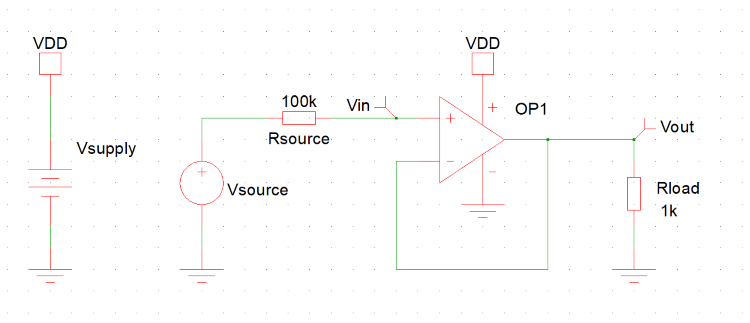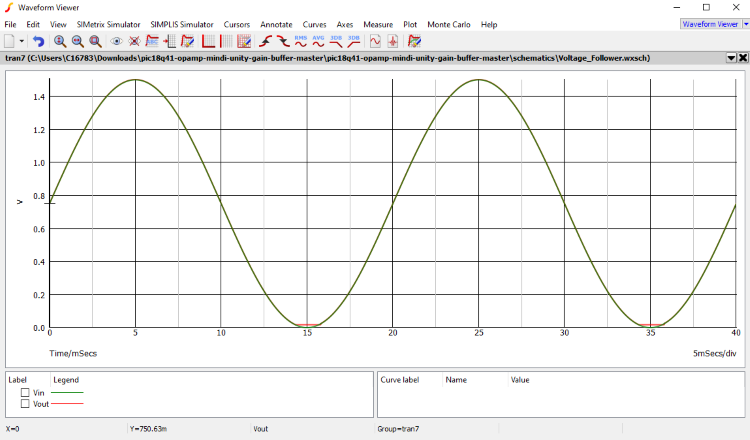The operational amplifier peripheral found on the PIC18-Q41 family of devices is a versatile feature and can be used in many different configurations, depending on the application. The previous example demonstrated how Mindi could be used to simulate a non-inverting amplifier circuit utilizing the PIC18-Q41 model library provided alongside this device family. This example will demonstrate how Mindi can be used to simulate the operational amplifier on the PIC18-Q41 when it is configured as a unity gain buffer.
A unity gain buffer is an operational amplifier configuration commonly used in analog signal conditioning circuits. Unity gain buffers ideally have a gain of 1, and the inverting input is connected directly to the operational amplifier output to provide feedback. Figure 1 shows the complete schematic used in Mindi to simulate this circuit using the PIC18-Q41 operational amplifier library model.

The simulation of this circuit was very similar to the previous example, where the transient response of the input and output of the operational amplifier was analyzed over 40 ms. The non-inverting amplifier example was designed to have a gain of 4, so the output signal may be four times larger than the input signal. The unity gain buffer in this example only has a gain of 1 and, by design, the input and output signals should have identical voltages. The input voltage source used in this simulation was set up to provide a sinusoidal waveform with an amplitude of 1.5V and an offset of 750 mV.
Figure 2 shows the simulation results for the PIC18-Q41 unity gain buffer. In this figure, the green waveform represents the operational amplifier input and the red waveform represents the operational amplifier output. The input and output waveforms of the operational amplifier overlap each other as they are equal due to the circuit configuration and expected gain of 1. For more information about using the PIC18-Q41 Mindi model library to simulate a Unity Gain Buffer (Voltage Follower), visit the PIC18-Q41 Unity Gain Buffer Code Example.
